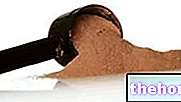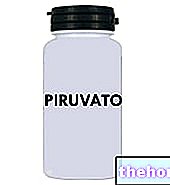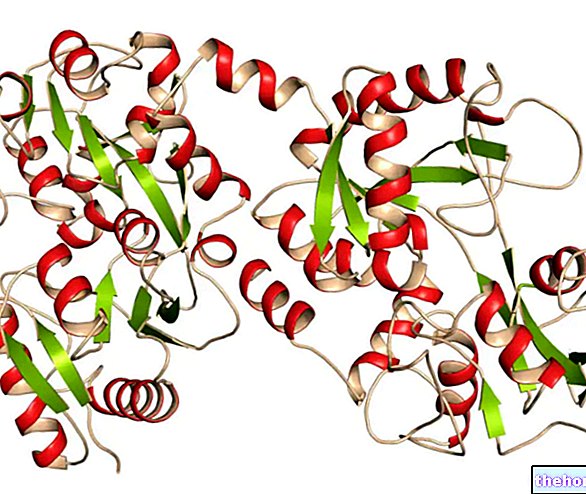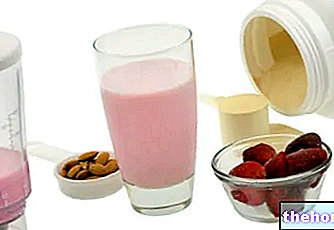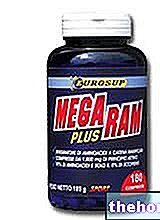Plant extracts are liquid (fluid extracts), solid (dry extracts) or intermediate consistency (soft extracts) pharmaceutical preparations, obtained from fresh or more commonly dried plant drugs, by means of suitable extraction processes; these include the use of appropriate solvents and the use of maceration or percolation, or other suitable procedures. The degree of elimination of the solvent will then determine the consistency of the plant extract (fluid, dry or soft).

Depending on the solvent used, the plant extracts are classified into aqueous, hydroalcoholic, alcoholic and ethereal. Regardless of the choice of solvent, its elimination up to the prescribed concentration must be carried out with procedures designed to preserve the active principle.
If necessary, after extraction, unwanted substances are eliminated from the plant extract; other times the drugs to be extracted must be subjected to a preliminary treatment (eg. Inactivation of enzymes, degreasing, etc.).
Whatever the technique used, the production of any plant extract begins with the selection of the drug, that is, the part of the plant used for therapeutic purposes. Among the innumerable substances that constitute it, we recognize some pharmacologically inert, unwanted or poorly active, and others with the sought-after pharmaceutical properties. ensure a therapeutic effect as uniform as possible; at the origin, in fact, the content in active ingredients of the drug varies greatly according to the methods of cultivation, harvesting, conservation and treatment of the plant. To guarantee a good extraction of the substances, the starting drugs must be reduced to a suitable degree of subdivision, while the choice of the solvent is related to the type of active ingredients to be extracted, and to those unwanted to be left in the so-called lees or residues.
The Ministry of Health regulates the extracts marketable in Italy in the form of a supplement; Here it is possible to consult the list of plant extracts allowed and not allowed by clicking on the relative links.
Fluid plant extracts
They are dense liquid preparations in which, in general, a part by weight of the extract corresponds to a part by weight of the dried raw material (in practice, therefore, one ml of fluid extract must contain the quantity of active ingredients of one gram of drug dry). The fluid extracts can be prepared with the procedures indicated in the general part (maceration, percolation), but also by dissolving a dry or soft extract in alcohol of an appropriate title. When left to rest, the fluid extracts can form a slight The alcoholic ones are particularly rich in active principles, since alcohol, unlike water, is able to extract almost all of the phytocomplex from the starting plant drug. Alcohol, in addition to having a superior solvent power, acts as an excellent preservative. Whatever the method of preparation chosen, the extracts obtained must have a comparable composition; sometimes used as such (in drops), they are most often used to make syrups, potions or other pharmaceutical forms.
Soft extracts
They are preparations of intermediate consistency between liquid extracts and dry extracts. They are obtained by partial evaporation of the extractive liquids, as long as the residue no longer wets the paper without glue. They can be prepared with the methods described for the fluid extracts and, like the same, they can be added with appropriate antimicrobial preservatives. The dry residue is generally not less than 70% by mass.
Soft plant extracts can be used in the preparation of pills, ointments and suppositories. Those titrated are brought to the prescribed title by means of appropriate inert substances (lactose, sucrose, dried starch).
Plant extracts in cosmetics
- Rosmarinus Officinalis Extract
- Calendula Officinalis Extract
- Ruscus Aculeatus Extract
- Camelia Sinensis Extract
- Centella asiatica Extract
- Echinacea Angustifolia Extract
- Tilia Platyphyllos Extract
- Chamomilla Recutita (Matricaria)
- Triticum Vulgare Germ Extract
- Vaccinium Myrtillus Extract
- Arnica Montana
- Hypericum Perforatum
- Malva Silvestris Extract
- Birch Alba Extract
Dry plant extracts
Dry plant extracts are presented as powdery preparations, but they cannot be considered powders. The latter, in fact, are obtained from the drug pulverization process, without any extraction with solvent. The therapeutic activity of the dry extract is therefore superior, at the same dose, to that of powders, where in addition to the significant presence of unwanted substances, there are others that limit the bioavailability of the active ingredients. The dry plant extracts are obtained by total evaporation of the solvent at temperatures below 50 ° C, so as not to alter the active ingredients. If these are particularly thermolabile or easily degradable, the elimination of the solvent can be performed by nebulization or lyophilization (cryodrying). The dry extracts are generally characterized by a dry residue of not less than 95% by mass; due to the high hygroscopicity (absorb the environmental humidity), are then packaged in capsules or tablets, to be kept in a dry place and away from light. The titrated dry plant extracts are brought to the prescribed title by means of appropriate inert substances (lactose, sucrose, dried starch ) or by means of another dry extract obtained from the same raw material used for their preparation.
The dry plant extracts boast the best preservation characteristics, while the standardization, that is the specification of the constant percentage content of active ingredients, represents an "important guarantee of therapeutic efficacy for the doctor who prescribes them. Not surprisingly, the dry plant extract represents the reference preparation of modern phytotherapy.
Select plant Fir Acacia Acerola Sorrel Yarrow Yarrow Yarrow Aconito Adatoda Garlic Agnocasto Agrimonia Alchemilla Alkekengi Aloe Altea Witch Hazel Ammi or Visnaga Pineapple Andrographis Anemone Pulsatilla Angelica Anise Star Anise Japanese Star Anise Bitter Orange Bitter Areca Arnica Harpagophytum Arpagophyte Artemisia Asteragus Basil Asparagus Asparagus Peruvian Asparagus Asparagus Asparagus Hawthorn Boldo Borage Shepherd's Purse Boswellia Bucco Butea superba Cocoa Coffee Cajeput Calamus Calamus Marigold Camedrio Chamomile Roman Chamomile Camphor Cinnamon Ceylon Maidenhair Capuchin Artichoke Cardamom Cardiac Thistle Asian Thistle Carvi Cascara Cassia Catecu Catha Cabbage Celandine Chicory Centaurea Cinnamon Cypress Celandine Chives Cypress Coca Cola Colchico Combreto Condurango Comfrey Coriander Cranberry Barberry American Chrysanthemum Cumin Turmeric Damiana Digital Dioscorea Drosera Dulcamara Dunalilella Echinacea Eder a Ephedra Elenio Eleutherococcus Helichrysum Evening primrose Horsetail Alfalfa Erica Euphrasia Erisimo Escolzia Eucalyptus Farfara Farfaraccio Calabar bean Fenugreek Fennel Phytolacca Frangola Ash Fumaria Japanese Mushrooms Galega Ganoderma lucidum Garcinia Cambogia Mulberry Gentian Broom Ginkgo Ginkgo Guipana Guipana Gynestra Ginkgo Hibelia Gymnasium Hibiscus Guarulp St. John's Wort Horse Chestnut Ispaghul Hyssop Jaborandi Kava kava Konjac Laminaria Cherry Laurel Lavender Lemongrass Lespedeza Lovage Icelandic Lichen Lemon Flax Lippia Licorice Lobelia Hops Maca Marjoram Maize Mallow Manna Marrubio Marrubio d "water Matè Melaleuca Meliloto American Lemon balm Myrtle Myrama Walnut Nutmeg Walnut vomica Olive tree Meadowsweet Ononide Opuntia Oregano Orthosiphon Nettle Poppy Papaya Parietaria Feverfew Passiflora Chilli Perilla Periwinkle Phyllanthus Plantain Picrorhiza Pilosella Pino Pisci dia Podofillo Polygala Grapefruit Parsley Psyllium Pueraria mirifica Butcher's broom Pygeum Quassia Oak Rhubarb Ratania Rauwolfia currant Castor bean Rhodiola Rosehip Rosemary Rue Willow Sarsaparilla Sage Elderberry Sassafras Sedum Ergot Senna Serenoa Repens Soybean Solidago Tansy Taraxus Tamarind Tamarind Tamarind Tamarind Tamarindo Ursina Valerian Vanilla Mullein Verbena Veronica Viburnum Vinca Pansy Mistletoe Vine Withania Yohimbe Saffron Ginger Pumpkin Select disease Juvenile Acne Rosacea Tinnitus Tinnitus Aerophagia Tendon Affections Afonia Aphthae Algias Functional Halitosis Breastfeeding Allergy Anemia Anguish Anxiety Arteriosclerosis Asthrosis Asthrosis Arthritis Arthritis Men Sex Woman Blepharitis and Conjunctivitis Eye bags Bronchitis Gallstones Kidney stones Salivary stones Baldness Androgenetic Candida Fragile hair Caries Headache Cellulitis Motion sickness Cystitis C limaterio Cholecystopathy High cholesterol Ulcerative colitis Colonoscopy Contusions Hematoma Convalescence Couperose Depression Dermatitis Diaper dermatitis Diabetes Diarrhea Erectile dysfunction Dyslipidemia Dysmenorrhea Dyspepsia Disturbances of vision Hemorrhoids Epistaxis Herethism Heart disease Fever Fibromyalgia Gastro-intestinal disease Flatulence Hypertension Fibromyalgia Gastrointomnia Jaundice Laryngitis Renal lithiasis Toothache Sore throat Thinness Menopause Meteorism Mononucleosis Alzheimer's disease Crohn's disease Nausea Vomiting Obesity Dark circles Onychomycosis Osteoporosis Dry skin Periarthritis Piorea Low pressure Prostatitis Psoriasis Colds Breast fissures Anal fissures Gastro-nasal rhinitis Senescence Premenstrual Syndrome Sinusitis Quit smoking Overweight Fatty liver Constipation Stomatitis Stress Cough Triglycerides high Ulcer Burns Nails Brittle flashes Heat Warts Dizziness Properties herbal Tanning Abortive adaptogenic Aphrodisiac bittering analgesic anesthetic anorectics analgesic antacid anti-allergic anti-asthmatic Antibiotic catarrh Anticellulitiche anticonvulsant Antidiaforetiche antidiarrheal edematous anthelmintic antiemetic Antiemorroidarie antiphlogistic Antiidrotiche Antinevrotiche Antioxidants antipyretic antirheumatic antiscorbutic Antiseptic antispasmodic anti-uric Aperitive Flavoring Astringent Balsamic Bechiche Capillarotrope Cardiotonic Carminative Cathartic Caustics Healing Cholagogues Choleretic Dyes Decongestants Deodorants Purifying Diaphoretic Cleansers Disinfectants Detoxifiers Thirst quenching Diuretics Exciting Emetics Emmenagogues Emollients Hemostatic Energies Hepatoprotectors Expectorants Eupepticus Moisturisers Galactosensitizers lanti Hypertensive Hypnotic Hypoglycemic Hypotensive Irritants Laxatives Soothing Narcotic Nerves Nutrients Odontalgic Pectoral Purgative Revulsive Remineralizing Refreshing Rubefacient Scialagoghe Sedative Soporifugas Sneezing Stomachic Stomatics Narcotic Vascular Tightenitis

